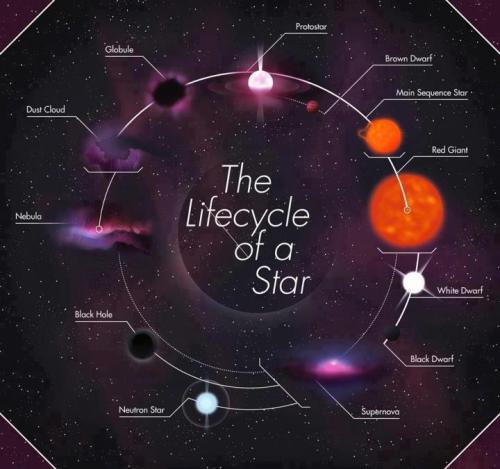A personal temporospatial claudication for Young Wizards fandom-related posts and general space nonsense.
288 posts
Latest Posts by outofambit - Page 9
Top Ten Female Characters from Books or Television
2) Nita Callahan
Favorite quote: “Wow, who sold you that one? I think I’ll go ennoble a couple waffles.” (And basically all of books 6 and 9 where she saves the day)
Nita is my favorite book heroine ever. From the very beginning, I related to her completely for her love of reading and learning, and for being made fun of for it. She is one of the most relatable characters I’ve ever come across. She’s young, but seems so much older- whether because of the wizardry and the responsibility that comes along with it, or because everyone always feels like they’re more mature than the world thinks they are. She shows us that you don’t have to be a respected adult to change (or to save) the world. She’s insecure, selfish, moody (like when she snaps at Kit for no reason), but she also can admit when she’s messed up and learns from her mistakes. She considers giving up wizardry and her best friend to save her mother. She almost goes through with sacrificing herself to save the world (even though she wasn’t too happy about it when she first found out that’s what she got herself into) when she was what, 12/13? She’s quick in a crisis, and very smart. In A Wizard Alone, she taught me so much about grieving, and I wished those books had been there for me when my own mom passed away (though I was probably a bit too young then). Not to mention that in A Wizard Alone she singlehandedly saves the day, using what the Lone Power tried to use to bring her down to bring It down, and save Darryl and Kit. She also nearly singlehandedly saves the day in A Wizard of Mars, not letting her jealousy or anger get in the way of what needed to be done, while also being rather bad ass about it. Nita taught me that it’s okay to be angry- you can use it to your advantage. She helped to teach me that what people think of you doesn’t matter. The people who made fun of/beat up Nita didn’t know that she helped save their lives more than once, and she never let them color her view of humanity. She never once doubted that their lives weren’t worth saving, despite how they treated her. She showed me that being a good sister doesn’t mean you can’t fight and tease each other sometimes. She went from being very dependent on Kit- always giving her power to him, helping him rather than the other way around- to being a very good, independent wizard who stands on her own and stands tall.
“Every atom in your body came from a star that exploded. And, the atoms in your left hand probably came from a different star than your right hand. It really is the most poetic thing I know about physics: You are all stardust. You couldn’t be here if stars hadn’t exploded, because the elements - the carbon, nitrogen, oxygen, iron, all the things that matter for evolution and for life - weren’t created at the beginning of time. They were created in the nuclear furnaces of stars, and the only way for them to get into your body is if those stars were kind enough to explode. So, forget Jesus. The stars died so that you could be here today.”
Lawrence M. Krauss (via thorosofmyr)
Selections from Tallmadge Doyle’s ethereal Celestial Mapping Series
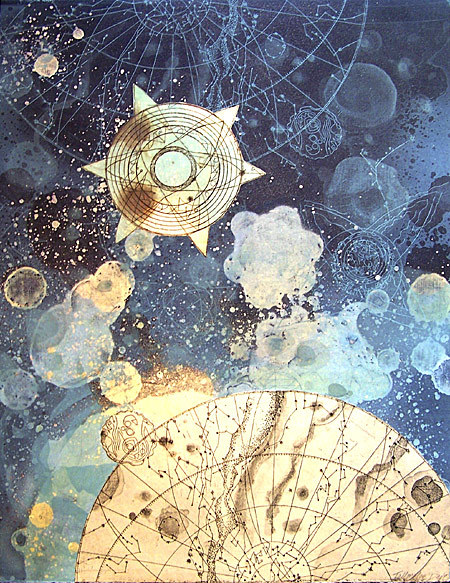
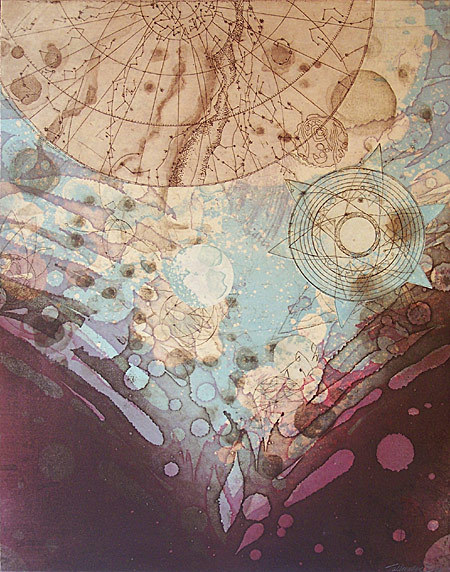





Astronomers have discovered the largest known structure in the universe, a clump of active galactic cores that stretch 4 billion light-years from end to end. The structure is a light quasar group (LQG), a collection of extremely luminous Galactic Nulcei powered by supermassive central black holes.
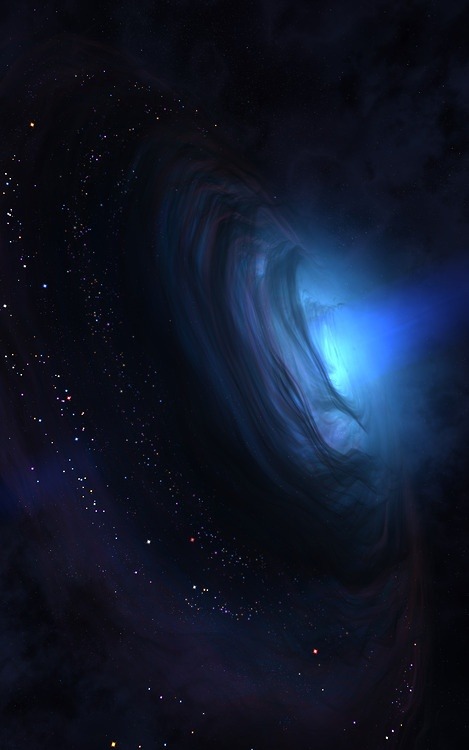



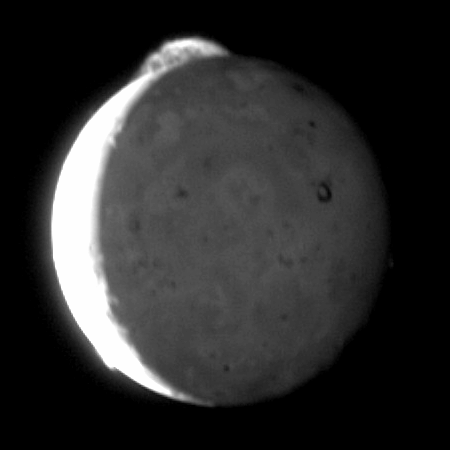


Io is the first Galilean moon of Jupiter, it is slightly larger than Earth’s moon. Io experiences intense tidal heating due to its elliptical orbit and orbital resonance with Europa and Ganymede. This makes Io the most geologically active moon in our solar system. Io’s interior is composed of molten iron sulphide, and the surface is a crust of sulfur and silicon. Io has more than 400 active volcanoes, which can eject lava plumes more than 500 kilometers above the surface. Some of the material from Io’s volcanic eruptions leaves the moon and orbits Jupiter, producing a plasma torus. Io also has lakes of lava called paterae, which can also create eruptions. The most dramatic paterae are Loki, Tvashtar, and Tupan. The constant volcanic activity creates a thin atmosphere of sulfur dioxide and sodium chloride. Io is an interesting model for exoplanets with intense geological activity, such as COROT-7b.
remus would have been so good at finding loopholes for the marauders to slip through like i mean as a prefect he would have had to know all of them to an extent and i can just see sirius hopping onto his bed like “hey moony can we do this thing without technically breaking any rules” and remus would be like well no but you could do this and then guess who doesnt have detention despite the fact that all anyone at the slytherin table has had for dinner the past four days is haggis
gUYS VOYAGER 1 IS CONFIRMED OUT OF THE SOLAR SYSTEM WE’VE BROKEN OUT OF THE SOLAR SYSTEM THIS IS REALLY COOL










Postcards from Mars
8tracks is Radio, rediscovered - blood in the water i sing; (38min) by maerad| music tags: young wizards, deep wizardry, and the song of twelve | a mix for the song of twelve.
awesome playlist for deep wizardry. listen, cousins!

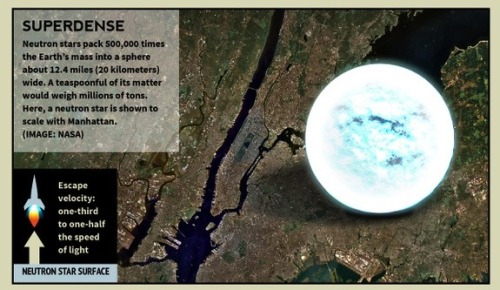
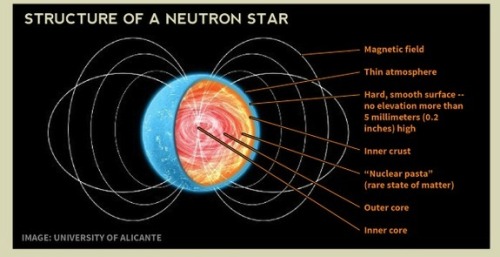
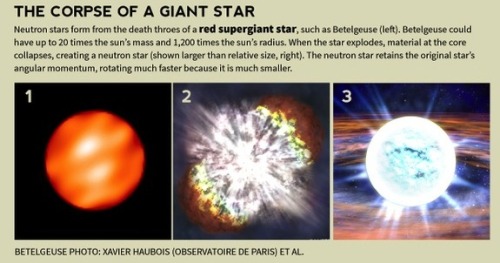
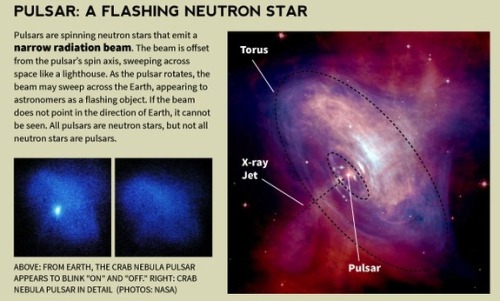

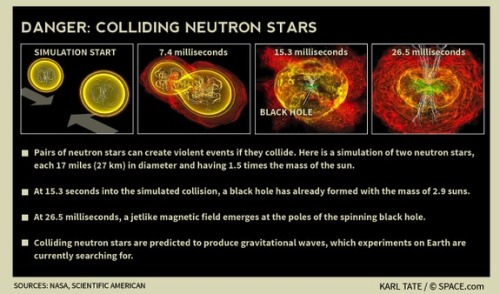
Inside a Neutron Star
Credit: Karl Tate, via SPACE.com
Young Wizards will always be the best YA series because you’ll fall in love with and cry about sentient tears in spacetime, sharks, amalgamations of spheres, computers, gods, macaws, and most importantly you’ll begin to believe fiercely in the beauty and heartbreak of the universe.
What is an Ocean but a Multitude of Drops?
I’ve been pondering the recurring notion in Young Wizards—introduced in the first book—that “even…unmagical-seeming actions” have importance in the fight against entropy. Whether it’s turning the lights off when one leaves a room, having a kind word for someone in need of encouragement, or just using the bus for transport to an alien mall crawl (“Wizards are supposed to use public transport—it’s ecologically sound!”), these little choices are no less important than galaxy-spanning fights with the Lone Power. And indeed, it’s often the little things—like Nita’s space pen or Ponch’s squirrels—that make the big victories possible.
It’s a concept that recurs in several of my other favorite works of fiction, as well. Rory’s father, Brian, from the most recent season of Doctor Who springs immediately to mind. A down-to-earth sort, Brian spends his screentime changing lightbulbs, carefully watching alien artifacts for days on end, and throwing golf balls for nearby dinosaurs to play fetch with. Unlike most of the Doctor’s associates, he doesn’t progress from these humble beginnings into something “remarkable”—he never becomes immortal or the Bad Wolf or anything like that. But instead, his very mundane habits are exactly what’s needed to save the world on multiple occasions. And when the Doctor offers to let him travel across time and space full-time, his response is simply, “Somebody’s got to water the plants.”
I bring this up because it’s a rather uncommon line of thought, on the whole. Far more common is the desire to change oneself, to journey forth from humble origins and grow into something great, to leave a mark on the world. But examples like the ones I mentioned above suggest that perhaps we’re not on the way to doing something remarkable—we already are, from one day to the next.
In the final lines of Cloud Atlas, both the book and the film (I heartily recommend either, incidentally), one of the protagonists ponders the notion that his efforts to change the world only amount to “a single drop in a limitless ocean.”
"But what is an ocean," he concludes, "but a multitude of drops?"
The same, I think, applies to all of us. We may not all be heroes or luminaries who command the destinies of millions, but within the smaller confines of our individual lives, every choice we embark upon makes a difference. And ultimately, the whole of human history is comprised of nothing else but people making decisions, many of them seemingly unimportant, one day at a time. Taken all together, though, it adds up to something remarkable. No man is an island, and every rock idly tossed into a pond produces ripples.
It’s both encouraging and terrifying to think about.

Star Forming Region S106
Massive star IRS 4 is beginning to spread its wings. Born only about 100,000 years ago, material streaming out from this newborn star has formed the nebula dubbed Sharpless 2-106 Nebula (S106), pictured above. A large disk of dust and gas orbiting Infrared Source 4 (IRS 4), visible in dark red near the image center, gives the nebula an hourglass or butterfly shape. S106 gas near IRS 4 acts as an emission nebula as it emits light after being ionized, while dust far from IRS 4 reflects light from the central star and so acts as a reflection nebula. Detailed inspection of images like the above image has revealed hundreds of low-mass brown dwarf stars lurking in the nebula’s gas. S106 spans about 2 light-years and lies about 2000 light-years away toward the constellation of the Swan (Cygnus).
ORBITAL MECHANICS
Complexity Graphics by Tatiana Plakhova
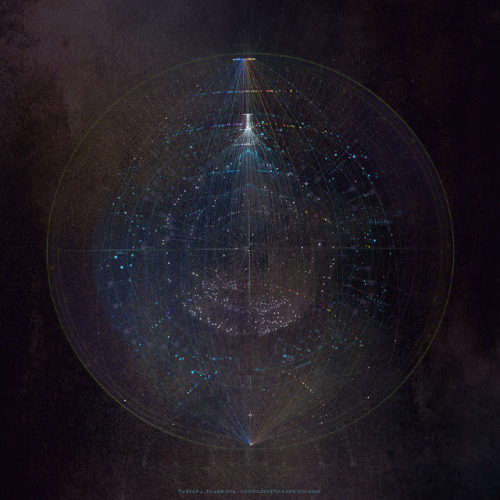
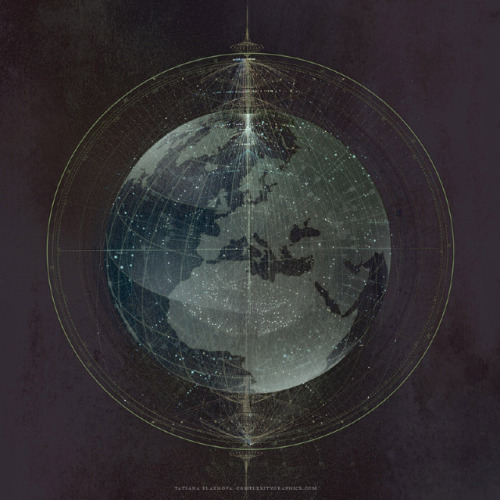
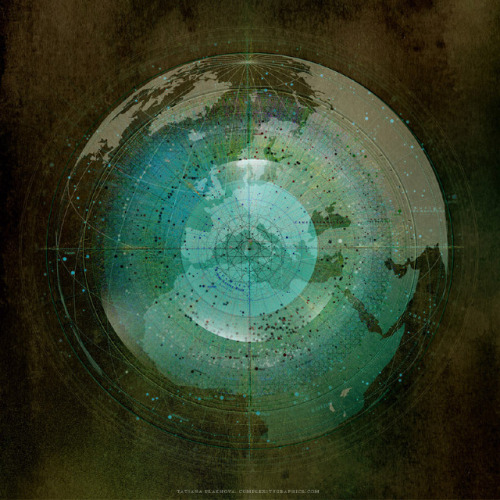
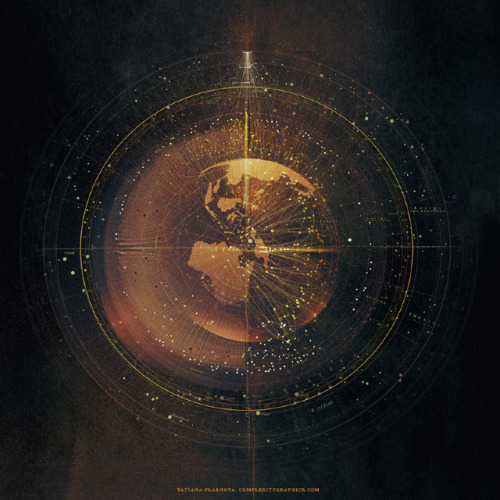
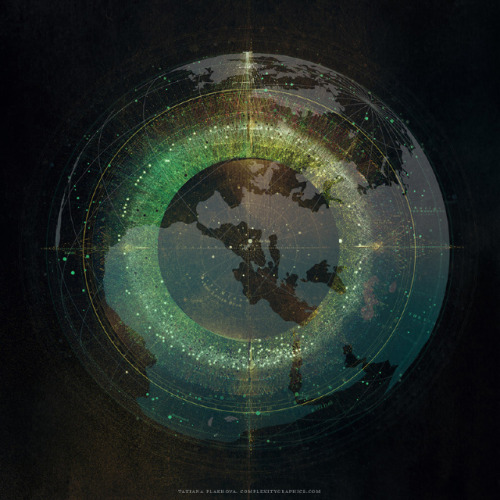
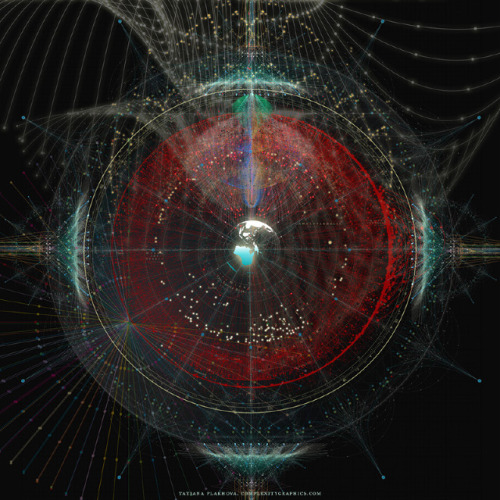




This fills me with a most delicious panic.
Cousins, we have work to do.

Most of the Universe is dark. The protons, neutrons and electrons that make up the stars, planets and us represent only a small fraction of the mass and energy of the Universe. The rest is dark and mysterious. X-rays can help reveal the secrets of this darkness. X-ray astrophysics is crucial to our understanding not only of the Universe we see, but the quest to determine the physics of everything.
Source (Chandra X-ray Center Observatory)

A Knot Zoo.

What are white holes? Many people are familiar with black holes as a 3-D hole that alters time and space where not even light can escape. However, what is our knowledge on white holes? Well, as your might suspect, white holes are the exact opposite of black holes. They expel matter into space at intense speeds with immense energy. Some cosmologists believe that on the other side of a black hole is a white hole. An interesting point that can either excite or disappoint you is that white holes cannot be entered from the outside. This means that there may never be physical proof of a white hole and will only stay in theories and mathematics.
Nevertheless, there is a paper written in 2012 that argued that the Big Bang was a white hole itself. Unlike black holes, white holes cannot be observed continuously and can only be observed at the time of the event. It also connects a new class called y-ray bursts to white holes. If you would like to read this interesting paper check out http://arxiv.org/pdf/1105.2776v2.pdf. Hopefully one day we can learn more about white holes and the mysteries they hold. The universe is fascinating and has secrets that are waiting to be unlocked the question is how much money are we willing to spend on the universe?
Take action today: http://www.penny4nasa.org/take-action/
Rebloggable-d by request: Names in the Speech
So this may be an odd question, and not one you’ve thought about much — but how would the Speech interact with someone who uses/identifies as a different name than their birth/legal name? I don’t mean like Kit — presumably his name in the Speech would include a phrase along the lines of ‘Christopher, called Kit’ — but a case where the birth name has been ‘rejected’, and isn’t part of the wizard’s identity at all.
intheafterlight
It seems like the first rule of magic, or at least the first limitation mentioned, is usually ‘you can’t bring back the dead.’
And I know it makes sense from a writing standpoint, but I also wonder if it comes from somewhere else. If that’s just the first, most common human...










I love nebulas



New observations of a ‘dust trap’ around a young star solve long-standing planet formation mystery Astronomers using the new Atacama Large Millimeter/submillimeter Array have imaged a region around a young star where dust particles can grow by clumping together. This is the first time that such a dust trap has been clearly observed and modeled. It solves a long-standing mystery about how dust particles in discs grow to larger sizes so that they can eventually form comets, planets and other rocky bodies.
Astronomers now know that planets around other stars are plentiful. But they do not fully understand how they form and there are many aspects of the formation of comets, planets and other rocky bodies that remain a mystery. However, new observations exploiting the power of ALMA are now answering one of the biggest questions: how do tiny grains of dust in the disc around a young star grow bigger and bigger—to eventually become rubble, and even boulders well beyond a metre in size?
Computer models suggest that dust grains grow when they collide and stick together. However, when these bigger grains collide again at high speed they are often smashed to pieces and sent back to square one. Even when this does not happen, the models show that the larger grains would quickly move inwards because of friction between the dust and gas and fall onto their parent star, leaving no chance that they could grow even further.
Somehow the dust needs a safe haven where the particles can continue growing until they are big enough to survive on their own. Such “dust traps” have been proposed, but there was no observational proof of their existence up to now.
Bottom left image: Artist’s impression of the proposed disk structure of Oph IRS 48. The brown spots represent the large and small grains. The larger grains detected by ALMA are concentrated in the dust trap at the bottom of the image. The blue represents the distribution of carbon monoxide gas. The gap in the disk is shown with the proposed planetary body that is sweeping the area clear and providing the conditions necessary to form the dust trap. Credit: Nienke van der Marel
Nienke van der Marel, a PhD student at Leiden Observatory in the Netherlands, and lead author of the article, was using ALMA along with her co-workers, to study the disc in a system called Oph-IRS 48. They found that the star was circled by a ring of gas with a central hole that was probably created by an unseen planet or companion star. Earlier observations using ESO’s Very Large Telescope had already shown that the small dust particles also formed a similar ring structure. But the new ALMA view of where the larger millimetre-sized dust particles were found was very different!
“At first the shape of the dust in the image came as a complete surprise to us,” says van der Marel. “Instead of the ring we had expected to see, we found a very clear cashew-nut shape! We had to convince ourselves that this feature was real, but the strong signal and sharpness of the ALMA observations left no doubt about the structure. Then we realised what we had found.”
What had been discovered was a region where bigger dust grains were trapped and could grow much larger by colliding and sticking together. This was a dust trap—just what the theorists were looking for.
Bottom right image: ALMA image of the dust trap around Oph IRS 48. The distinctive crescent-shaped feature comes from the accumulation of larger dust grains in the outer regions of the disk. This provides the safe haven dust grains need to grow into larger and larger objects. Credit: ALMA (ESO/NAOJ/NRAO) / Nienke van der Marel
As van der Marel explains: “It’s likely that we are looking at a kind of comet factory as the conditions are right for the particles to grow from millimetre to comet size. The dust is not likely to form full-sized planets at this distance from the star. But in the near future ALMA will be able to observe dust traps closer to their parent stars, where the same mechanisms are at work. Such dust traps really would be the cradles for new-born planets.”
The dust trap forms as bigger dust particles move in the direction of regions of higher pressure. Computer modelling has shown that such a high pressure region can originate from the motions of the gas at the edge of a gas hole—just like the one found in this disc.
“The combination of modelling work and high quality observations of ALMA makes this a unique project”, says Cornelis Dullemond from the Institute for Theoretical Astrophysics in Heidelberg, Germany, who is an expert on dust evolution and disc modelling, and a member of the team. “Around the time that these observations were obtained, we were working on models predicting exactly these kinds of structures: a very lucky coincidence.”
The observations were made while the ALMA array was still being constructed. They made use of the ALMA Band 9 receivers—European-made devices that allow ALMA to create its so far sharpest images.
“These observations show that ALMA is capable of delivering transformational science, even with less than half of the full array in use,” says Ewine van Dishoeck of the Leiden Observatory, who has been a major contributor to the ALMA project for more than 20 years. “The incredible jump in both sensitivity and image sharpness in Band 9 gives us the opportunity to study basic aspects of planet formation in ways that were simply not possible before.”


Kepler Mission Analysis Shows Reduced Number of Earth-Sized Planets in Field of View
A large number of worlds found by NASA’s Kepler alien planet-hunting space telescope are probably significantly larger than scientists previously estimated, a new study suggests. Using a galaxy similar to our own Milky Way, the image above shows the scale of the distances for the sample of stars with planet candidates described in a new study by scientists using the Kitt Peak National Observatory Mayall 4-meter telescope . The circled dot represents the position of the sun in the Milky Way, and the stippled cone shows how far away the new candidate stars are (2800-7000 light years), compared to the size of our galaxy.
The Kepler Space Telescope has spotted more than 2,700 potential exoplanets since its launch in 2009, and scientists using the Kitt Peak National Observatory categorized the home stars of many of those planet candidates for the past three years. In particular, the researchers made detailed follow-up observations of 300 of the stars Kepler found likely to be harboring exoplanets.
The Kepler satellite, in orbit around the sun, stares at a region of the northern hemisphere sky sandwiched between the bright stars Vega and Deneb. Attached to the telescope is the largest imaging camera ever flown into space—16 million pixels—the only instrument on the telescope and the one used to monitor all the stars in its search for planets. Planets are detected if they pass in front of their parent sun, causing a very slight dip in the star’s brightness. When this dip repeats periodically, it reveals the presence of a possible planet, the length of the planet’s “year”, and other information.
One of the main findings of this initial work is that our observations indicate that most of the stars we observed are slightly larger than previously thought and one quarter of them are at least 35 percent larger,” astronomer and leader of the study Mark Everett said in a statement. “Therefore, any planets orbiting these stars must be larger and hotter as well. By implication, these new results reduce the number of candidate Earth-size planet analogues detected by Kepler.”
Read
I would find a way to be there.
wowww
things that would be expensive: renting an RV
things that would actually probably be less expensive: inventing technology for teleports
I'm in Northern Michigan!

Map of cousins based on the directory. Some other cousins were added who have mentioned their whereabouts in conversation and i happened to remember but who are not listed. That said, consider this your invitation to update your directory listing if you so desire. There are several of you who are not in it who maybe want to be? (No pressure, of course!)
Orange dots are for people whose specific location was unclear, but i put them in the correct state/province (except that one in the middle of Canada, because all it said was ‘Canada’). Blue dots are close to the cities that were listed.
Some people have two dots, like me because i listed Cleveland and Boston, or like Erin because i know she’s moving soon.
Other locations listed were China, Japan, Asia, and i know there is at least one person in Germany.



rebloggable by request - what exactly is young wizards?





